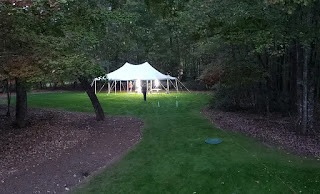Never Spring Seed in Virginia
If you have ever walked into any nursery or big-box hardware store in March or April, then you can't help but notice the shelves brimming with turf quality seed. Seed vendors will inundate you with grandiose pictures of beautiful lawns and green grass.
NOTHING COULD BE FURTHER FROM THE TRUTH!
Contrary to what these seed vendors tell you in March, Spring seeding is not a good idea. Now I know there are a few exceptions. If you have a lot of shade, irrigation, and a desire to spend a lot of money on watering, then yes, you can get it to look fairly decent this year.
However, this is not the norm.
What Goes Wrong With Spring Seeding?
There are two major factors that doom Spring seeding. The first is WEEDS. Early Spring is a time when weeds rule. You can either control weeds with a pre emergent or post emergent. The bad news is that both types of herbicides are extremely detrimental to new grass. So you have to make a choice. Either grow grass or fight weeds in Spring. Failure to fight weeds in Spring will cause the ugliest June, July, and August lawn you could imagine.
The second factor is heat. Now if you live in one of the New England States, you may be able to get away with Spring seeding, but certainly not in Virginia. If you plant in March, the new seed will only have about 2 months of growing time before it becomes really hot. At that point, you would be fortunate to have 1/2 of an inch of root system. Imagine what a 90 degree week does to that!
So what you end up with in Summer is a lawn with dead grass you planted and overrun with unabated weeds. Not a pretty site.
So save that money, invest in weed control. Seed in September and October when the weeds season is winding down. Get the steps in the right order and save yourself a bunch of cash!








